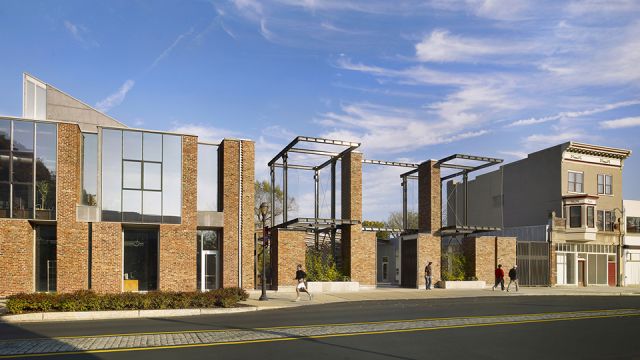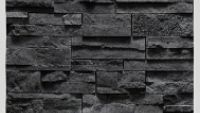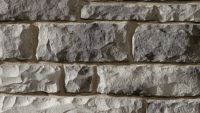2013 Citation of Merit awarded to Lafayette College Arts Plaza
Spillman Farmer Architects recognized
By Masonry
The American Institute of Architects (AIA), Pennsylvania Chapter awarded a 2013 Citation of Merit to the recently completed Lafayette College Arts Plaza in Easton, Pa. Spillman Farmer Architects (SFA) of Bethlehem, Pa., served as the project’s architect. The Citation of Merit recognizes projects that represent excellence through exceptional details or special design aspects. The Arts Plaza was also awarded a Special Mention in the Architecture + Urban Transformation category in the 2013 Architizer A+ Awards.
The $1.7 million, 7,000-square-foot Arts Plaza is an open-air space for the arts at Lafayette College. The project transformed a former auto-repair facility into an outdoor teaching space that responds to its natural environment and built context.
Spillman Farmer’s work for the college started when the school began to grow beyond its confines and into Easton’s downtown. Biondo began working with the college in early-2000 to design the Williams Visual Arts Building. Following this project and several smaller planning and building stabilization assignments throughout the arts campus, Spillman Farmer and the college focused on the adjacent garage.
At its core, the project is a distillation of the existing structure. The Arts Plaza introduces new materials, such as brick and steel, in unconventional ways. The plaza’s masonry walls are clad with clinker brick, a cast off of the brickmaking process, whose curvature and malformations are accented, rather than minimized. The brick’s curvature and imperfections provide texture and counterbalance the well-organized, restrained space.
The 3,200-square-foot, clinker-clad walls are 29 feet high. The project features 30,000 Mohawk clinker bricks manufactured by Colonial Brick. The Mohawk bricks are four inches wide, 2 ¼ inches high, and eight inches long. The Mazella Group served as the mason contractor.
Inside the plaza, the design team repaired and refinished the concrete floor slab. The engineers calculated loads where the new steel armatures had to rest on the concrete floor, ensuring the structural integrity of the slab and the arched structure below.
New masonry monoliths express the plaza’s streetfront. These obelisks rely only on the traditional craft of stacking brick to create openings and provide a structural, sculptural form. In contrast to the existing timber structure, new structural steel elements between the monoliths provide a scale and presence appropriate to the plaza’s urban context. These masonry columns and steel elements work together to create a rhythm at the street edge. Their scale and material echo the neighboring Williams Visual Arts Building. Their spacing continues the street’s rhythm, while creating openness and inviting movement into the plaza.
The project incorporates two cubic structural steel armatures, each draped with a veil of stainless-steel mesh. These transparent, ghost-like structures complement the masonry monoliths and reflect the dimensions and rhythm of windows of the nearby Williams Building. The delicate details of the steel mesh, carefully lit at night and adorned with climbing vegetation, organically complete the forms and bring a natural softness to the hard-edged, industrial streetfront. This effect is reinforced in the winter, when ice and snow build up on the mesh.
The X-TEND stainless steel cable mesh fabric presented a challenge to the construction team. The X-TEND system features AISI 316 stainless steel cables and seamless ferrules, which create a metal fabric that forms a diamond pattern as it is installed. The armatures, fabricated and erected by McGregor Industries of Dunmore, Pa., feature 32 tons of steel, mainly W8 x 28s structural steel members.
As the project neared completion, the college decided to connect the Williams Building to the Arts Plaza and opted for a new entrance located within the clinker brick-faced side wall. Spillman Farmer created a new opening in an existing corridor inside the Williams Building. The design team used this new, final element of the plaza to introduce a three-dimensional, human-scale element into the wall. The new entrance features a gabled frame constructed entirely of clinker brick. The new opening’s undulating lines highlight the texture and irregularity of the brick.
In addition to Spillman Farmer, other project team members included Whiting-Turner Contracting Co., construction manager; Lehigh Valley Engineering, electrical engineer; Barry Isett and Associates, structural engineer; and McTish, Kunkel & Associates, civil engineer.
Originally published in Masonry magazine.
About the Author
Masonry, the official publication of the Mason Contractors Association of America, covers every aspect of the mason contractor profession - equipment and techniques, building codes and standards, business planning, promoting your business, legal issues and more. Read or subscribe to Masonry magazine at www.masonrymagazine.com.




















